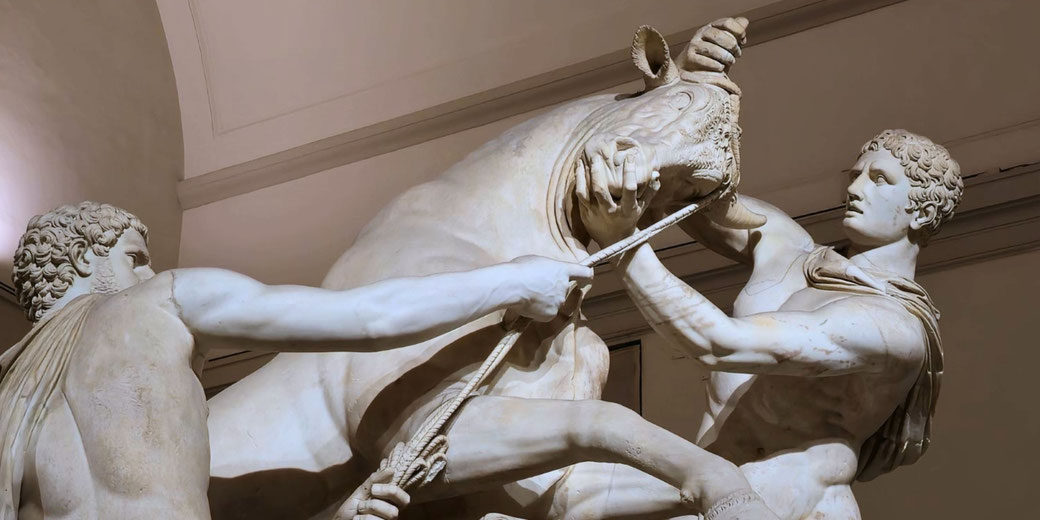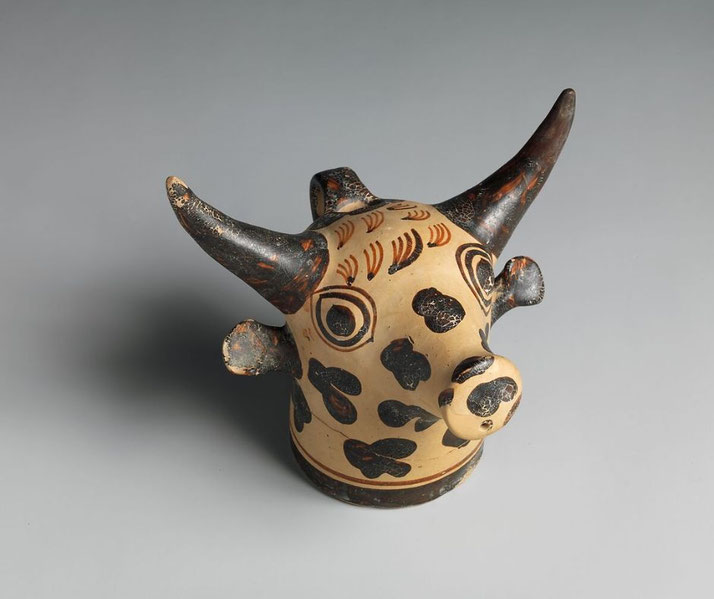The strange religious beliefs and rituals of the Minoan civilization

The Minoan civilization, named after the mythical King Minos, was a Bronze Age society that flourished on the island of Crete from approximately 3000 to 1450 BCE.
Known for its vibrant frescoes, intricate palace complexes, and advanced maritime prowess, the Minoans had a profound legacy on later Greek history.
Yet, beyond their architectural and artistic achievements, the Minoans were deeply spiritual, with a complex religious system that permeated every aspect of their society.
The great mystery of the Minoan religion
The Minoan civilization, despite its significant influence on the ancient world, did not leave behind any comprehensive religious texts or scriptures.
As a result, our understanding of Minoan religion is primarily based on archaeological evidence, including artifacts, frescoes, and the remains of temples and sanctuaries.
This evidence suggests that Minoan religion was polytheistic, with a pantheon of deities that were worshipped in various forms and contexts.
One of the most distinctive aspects of Minoan religion was the apparent emphasis on goddess worship.
The majority of divine figures depicted in Minoan art are female, leading many scholars to suggest that the Minoans worshipped a Great Goddess, who may have been a mother goddess or a nature goddess.
This goddess is often depicted in association with animals, particularly snakes and birds, and natural elements, such as trees and mountains, indicating a strong connection between the divine and the natural world in Minoan belief.
Despite the wealth of archaeological evidence, many aspects of Minoan religion remain enigmatic.
The Minoans' religious beliefs, the exact nature of their deities, and the specific meanings of their rituals are subjects of ongoing debate among scholars.
However, what is clear is that religion was a fundamental aspect of Minoan society, influencing their art, architecture, and daily life.
Sacred spaces and temples
The Minoan civilization, with its deep-seated religious beliefs, created a variety of sacred spaces for worship.
These spaces ranged from grand palatial complexes to open-air peak sanctuaries, and from cave sanctuaries to domestic shrines, reflecting the diverse ways in which the Minoans connected with the divine.
The grand palaces of Knossos, Phaistos, Malia, and Zakros, while primarily administrative and residential centers, also had significant religious functions.
These palaces housed multiple shrines and sanctuaries, where religious rituals were likely performed.
The palatial complexes were adorned with religious iconography, including frescoes depicting deities, sacred animals, and ritual scenes, indicating their importance as religious centers.
However, the most distinctive sacred spaces in Minoan Crete were the peak sanctuaries.
These were open-air shrines located on the tops of mountains, where the Minoans worshipped their deities under the open sky.
The peak sanctuaries were typically filled with a variety of offerings, including clay figurines, animal bones, and pottery, suggesting that they were sites of mass pilgrimage and ritual activity.
The location of these sanctuaries, high above the surrounding landscape, may reflect the Minoans' belief in the transcendence of their deities and their desire to be closer to the divine.
In addition to peak sanctuaries, the Minoans also worshipped in cave sanctuaries. These natural caves, found throughout Crete, were considered sacred spaces, perhaps due to their association with the underworld or the womb of the Earth Mother.
Like peak sanctuaries, cave sanctuaries contained a wealth of offerings, indicating their use for ritual purposes.
Domestic shrines were another important aspect of Minoan religious practice. These small shrines, located within residential buildings, were likely used for private worship and domestic rituals.
They often contained religious figurines, ritual vessels, and other sacred objects, suggesting that religion was an integral part of daily life in Minoan society.

What we know about their religious rituals
The Minoan civilization practiced a variety of rituals that were integral to their spiritual life.
These rituals, while diverse in nature, were all aimed at communicating with the divine, seeking blessings, or appeasing the gods.
One of the most iconic Minoan rituals was bull-leaping, also known as taurokathapsia.
This ritual, frequently depicted in Minoan frescoes, involved individuals leaping over the back of a charging bull.
While the exact purpose of bull-leaping is still debated among scholars, it is generally believed to have had a religious significance, possibly related to fertility, strength, or the worship of the bull as a sacred animal.
Another common type of Minoan ritual involved the use of figurines, often made of terracotta.
These figurines, which typically depicted humans, animals, or deities, were used in a variety of ritual contexts.
They were often found in large numbers at peak sanctuaries and cave sanctuaries, suggesting that they were used as offerings to the gods.
Minoan rituals also involved the use of various symbols and iconography. The double axe, or labrys, is one of the most common symbols found in Minoan religious contexts.
This symbol, often associated with the goddess, may have been used in rituals of sacrifice or purification.
Other common symbols include the horn of consecration, which may represent the horns of a sacred bull, and the sacral knot, a complex knot that may symbolize the connection between the human and divine realms.
Music and dance also played a significant role in Minoan rituals. Frescoes and pottery from Minoan Crete frequently depict individuals playing musical instruments or engaging in complex dances, suggesting that these activities were part of their religious ceremonies.
Music and dance may have been used to induce a trance-like state, allowing the participants to connect with the divine.
The roles of priestesses and priests
In the Minoan civilization, religion was a central aspect of daily life, and the roles of priestesses and priests were of paramount importance.
These religious leaders were the intermediaries between the human and divine realms, responsible for conducting rituals, maintaining sacred spaces, and interpreting the will of the gods.
One of the most distinctive aspects of Minoan religion was the prominence of female religious figures.
Many frescoes and figurines from Minoan Crete depict women in positions of religious authority, leading scholars to suggest that priestesses played a significant role in Minoan religious practices.
These priestesses are often depicted with symbols of authority, such as the double axe or the sacral knot, and are sometimes shown in the act of performing rituals, such as pouring libations or handling sacred snakes.
The prominence of priestesses in Minoan religion may reflect the importance of goddess worship in Minoan society.
The Minoans worshipped a number of female deities, including a possible Great Goddess, and it is likely that priestesses were primarily responsible for conducting rituals in honor of these goddesses.
The role of priestesses may also reflect the status of women in Minoan society, which is generally believed to have been more egalitarian than other contemporary societies.
While priestesses appear to have been prominent in Minoan religion, male religious figures, or priests, were also present.
These priests are less frequently depicted in Minoan art, but when they do appear, they are often shown in association with bulls, suggesting a role in bull-related rituals.
The presence of both priestesses and priests in Minoan religion indicates a complex religious hierarchy, with different individuals responsible for different aspects of religious practice.
The roles of priestesses and priests in Minoan society were not limited to conducting rituals.
They were also likely involved in the administration of sacred spaces, the organization of religious festivals, and the interpretation of omens and signs.
As the intermediaries between the human and divine realms, they held a position of great authority and respect in Minoan society.

What kind of sacrifices did the Minoans use?
The topic of animal and human sacrifice in the Minoan civilization is one of the most controversial and debated aspects of their religious practices.
While there is clear evidence of animal sacrifice, the question of human sacrifice remains a contentious issue among scholars.
Animal sacrifice was a common practice in many ancient cultures, and the Minoans were no exception.
Archaeological evidence, including the remains of animals found at religious sites and depictions of animals in Minoan art, suggests that animals, particularly bulls, were regularly sacrificed in religious rituals.
These sacrifices may have been made as offerings to the gods, as part of purification rituals, or as part of communal feasts during religious festivals.
The prominence of the bull in Minoan religion, as evidenced by the widespread practice of bull-leaping and the frequent depiction of bulls in Minoan art, suggests that bull sacrifices may have held a particularly important place in Minoan religious practice.
The question of human sacrifice in Minoan religion is much more complex. Some scholars have suggested that certain artifacts and archaeological remains indicate the practice of human sacrifice.
For example, a number of "kernoi," or offering tables, found at the peak sanctuary of Anemospilia were associated with human remains, leading some to suggest that they were used in human sacrifice rituals.
Similarly, some frescoes and seals depict scenes that could be interpreted as human sacrifice.
However, these interpretations are highly controversial and far from universally accepted.
Many scholars argue that the evidence is too ambiguous and that there are alternative explanations for these findings.
For example, the human remains found at Anemospilia could be the result of a natural disaster or a burial practice, rather than a sacrifice.
Similarly, the scenes depicted in Minoan art could be symbolic or mythological, rather than literal depictions of human sacrifice.

The Minoan influence on later Greek religion
The Minoan civilization, despite its eventual decline, left a lasting legacy that influenced later civilizations, particularly the Mycenaean civilization in mainland Greece and, subsequently, the classical Greek civilization.
The influence of Minoan religious rituals and practices can be seen in various aspects of these later cultures, from their religious beliefs to their art and architecture.
One of the most significant influences of Minoan religion was on the Mycenaean civilization, which rose to prominence after the decline of the Minoans.
The Mycenaeans, who had close cultural and trade connections with the Minoans, adopted many aspects of Minoan religion, including their deities, rituals, and sacred symbols.
For example, the Mycenaeans continued the worship of the Mother Goddess, a central deity in Minoan religion, and they adopted the double axe, a common Minoan religious symbol.
The Mycenaeans also continued the practice of bull-leaping, a distinctive Minoan ritual, as evidenced by depictions of bull-leaping in Mycenaean art.
The influence of Minoan religion can also be seen in the classical Greek civilization, although the connection is more indirect.
Many of the deities worshipped by the Greeks, such as Zeus, Poseidon, and Artemis, have parallels in Minoan religion, suggesting a continuity of religious beliefs.
Similarly, many aspects of Greek religious practice, such as animal sacrifice and the use of sacred caves and mountain peaks as places of worship, have their roots in Minoan religion.
In addition to their religious influence, the Minoans also left a lasting legacy in art and architecture.
The vibrant frescoes, intricate pottery, and grand palatial complexes of the Minoans had a significant influence on Mycenaean and Greek art and architecture, reflecting the enduring appeal of Minoan aesthetic sensibilities.
What do you need help with?
Download ready-to-use digital learning resources
Copyright © History Skills 2014-2025.
Contact via email
With the exception of links to external sites, some historical sources and extracts from specific publications, all content on this website is copyrighted by History Skills. This content may not be copied, republished or redistributed without written permission from the website creator. Please use the Contact page to obtain relevant permission.





